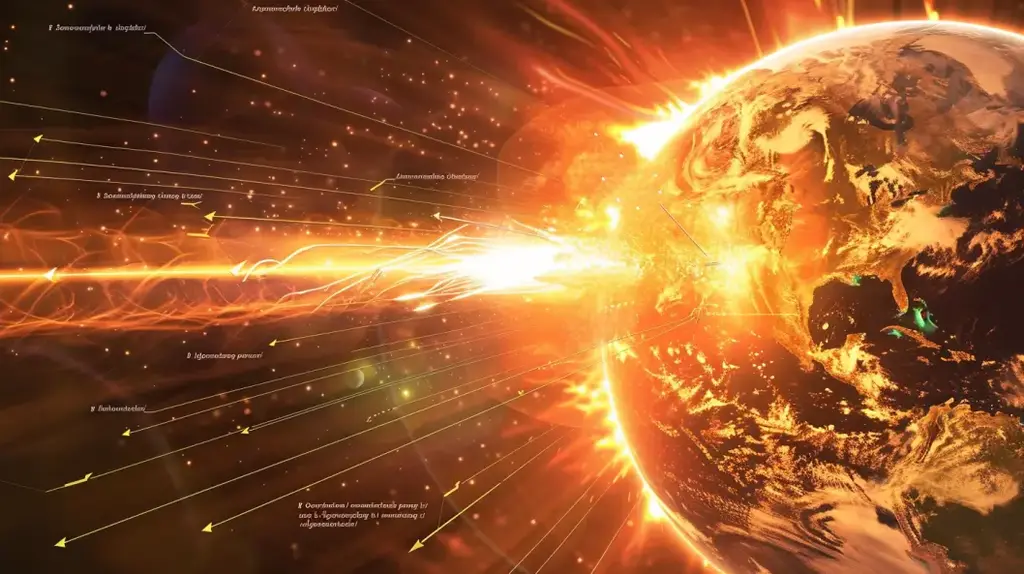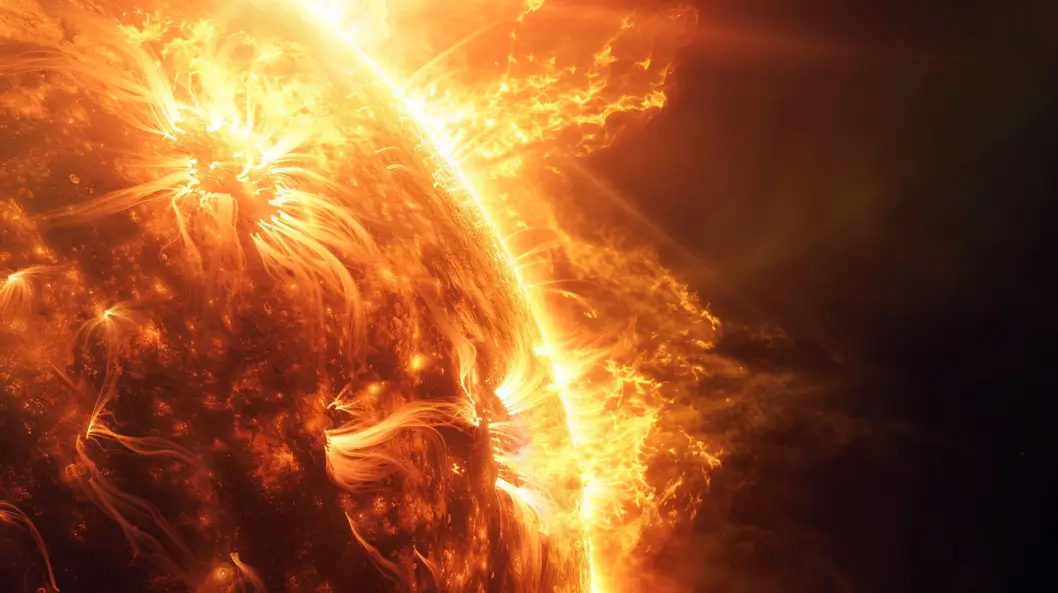
Magnetic storms are a phenomenon that occurs due to the interaction of the solar wind with the Earth’s magnetic field. They can affect not only technological systems, but also human health.
Basic facts about magnetic storms:
| Parameter | Description | Influence |
| Definition | Interaction of the solar wind with the Earth’s magnetic field | It affects the magnetosphere |
| Reasons | Solar flares and coronal emissions | Violation of electromagnetic fields |
| Physiological effects | Headache, fatigue | Temporary ailments |
| Psychological consequences | Irritability, anxiety | Influence on the emotional state |
| Technological consequences | Failures in electronics and communications | Equipment damage |
What are magnetic storms? 🌍
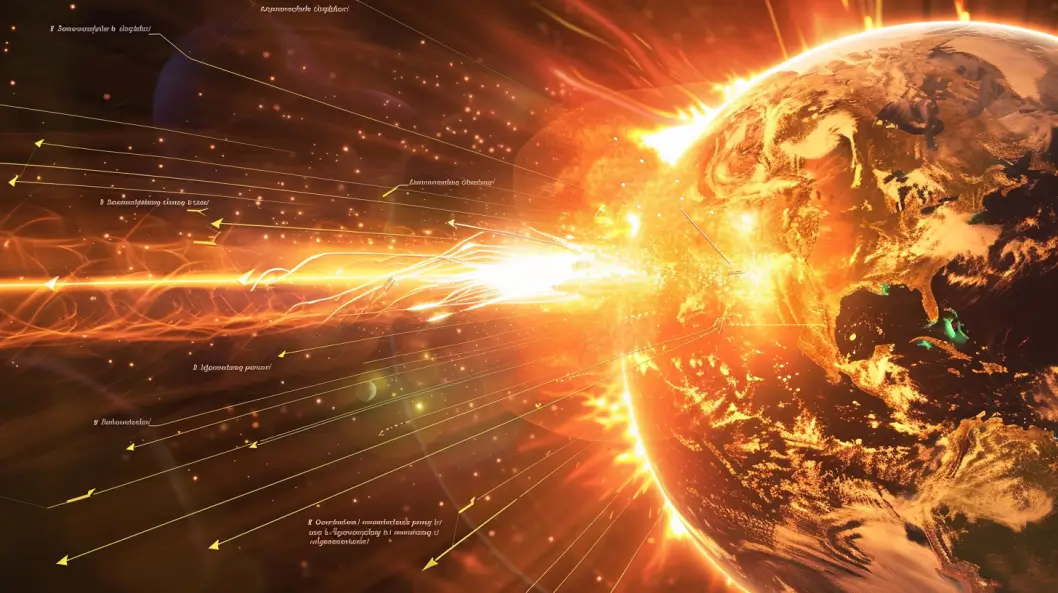
Magnetic storms are fluctuations in the Earth’s magnetic field caused by the influence of the solar wind. These storms occur when charged particles from solar flares and coronal ejections reach Earth and interact with its magnetosphere.
Causes of magnetic storms
The main causes of magnetic storms include:
- Solar flares: Emissions of energy from the Sun entering space.
- Coronal emissions: Large clouds of charged particles ejected from the Sun during flares.
- Solar wind: A stream of charged particles constantly coming from the Sun.
Impact on Earth
Magnetic storms can have a significant impact on the Earth and its technological systems. This phenomenon causes disturbances in the operation of satellites, failures in power supply and affects radio communication.
Violation of satellites 🛰️
Satellites orbiting the Earth are very sensitive to changes in space weather. During magnetic storms, charged particles from the Sun can penetrate the Earth’s magnetosphere and interact with electronics on satellites. This can lead to several problems:
- Disruption of communications: Satellites that provide communication and data transmission may lose signal or reduce transmission quality due to magnetic storms.
- Failures in navigation systems: GPS systems can operate with errors, affecting the accuracy of navigation for aircraft, marine vessels, and even automobiles.
- Damage to electronics: High-energy particles can disable electronic components of satellites, causing them to malfunction temporarily or permanently.
Power failures ⚡
Magnetic storms can cause major power outages that affect entire regions. This happens due to the impact on power grids:
- Induced currents: Magnetic storms can cause induced currents in long power lines, resulting in overvoltages and damage to transformers and other equipment.
- Violations in the operation of power plants: Strong magnetic storms can cause automatic shutdown of power plants to protect equipment from damage. This can lead to power outages over large areas.
- Increasing load on networks: Due to the need to compensate for damaged network elements, the load on other areas increases, which can cause additional failures.
Impact on radio communication 📡
Magnetic storms can have significant effects on radio communications, especially on the longwave and shortwave bands:
- Ionospheric disturbances: Magnetic storms can cause disturbances in the ionosphere, the layer of the atmosphere that reflects radio waves. This can lead to signal loss, noise and reduced communication quality.
- Violation of satellite communication: As already mentioned, satellites can lose contact or reduce the quality of data transmission, which affects satellite TV, the Internet and navigation systems.
- Impact on aviation and marine vessels: Radio communications used to communicate with aircraft and ships can also be disrupted, creating additional risks to the safety of flights and sea travel.
Magnetic storms can have diverse and serious consequences for our technological infrastructure. It is important to be prepared for such phenomena, use protective technologies and regularly update equipment to minimize possible risks.
How do magnetic storms affect humans? 🧑⚕️
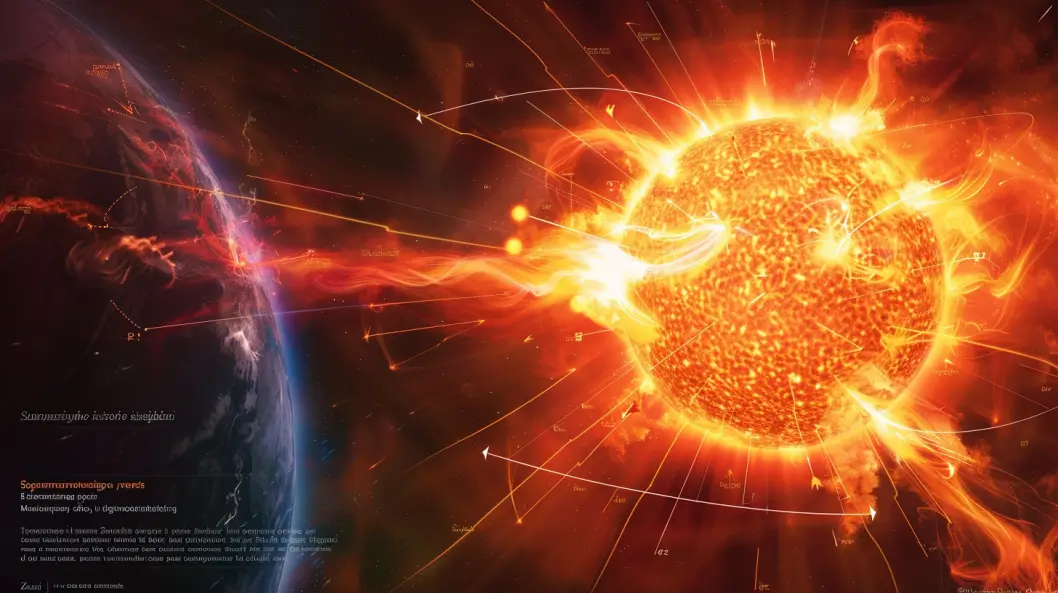
Physiological effects
Magnetic storms can have physiological consequences for humans, such as:
- Headache: Increased sensitivity to changes in the magnetic field.
- Fatigue: Feeling weak and low in energy.
- Pressure and heart problems: Fluctuations in blood pressure and impact on heart rate.
Psychological consequences
Psychological effects of magnetic storms can include:
- Irritability: Increased excitability and nervousness.
- Anxiety: Feeling anxious for no apparent reason.
- Sleep disturbance: Sleep problems, insomnia.
Long-term effects
Long-term effects of magnetic storms can include:
- Chronic stress: Constant stay in a state of stress.
- Deterioration of general well-being: Constant physical and psychological ailments.
Why do magnetic storms affect humans? 🌌
There are various scientific theories explaining the impact of magnetic storms on humans. One of them is the influence of electromagnetic fields on biological processes in the body. Research shows that changes in the magnetic field can affect brain and heart function.
The Earth’s magnetic field plays an important role in the regulation of biorhythms and other physiological processes in the human body. Fluctuations in this field can cause disruptions in these processes, resulting in various physical and psychological symptoms.
Modern research continues to study the relationship between magnetic storms and human health. Scientists are using new technologies to monitor the impact of magnetic storms and develop methods to reduce their negative impact.
Magnetic storms and children’s health 🧒

Children’s bodies are more sensitive to changes in the magnetic field. Children may experience stronger physiological and psychological reactions to magnetic storms.
Possible risks and safety measures
Risks to children include:
- Increased excitability.
- Sleep disturbance.
- Problems with concentration.
Safety measures:
- Ensuring a calm environment.
- Regular physical exercises.
- Control of the child’s health.
Tips for parents
Parents should pay attention to the health of their children during magnetic storms and provide proper care and support.
Medicines are available to alleviate the effects of magnetic storms 💊
Magnetic storms can have various effects on human health, including headaches, fatigue, irritability and sleep disturbances. There are several medications and supplements that can help both children and adults cope with the effects of magnetic storms. Here are some of them:
Drugs for adults
- Analgesics and anti-inflammatory drugs
- Ibuprofen: Relieves headache and reduces inflammation. Can be used to relieve pain and discomfort caused by magnetic storms.
- Aspirin: Reduces pain and inflammation and helps with headaches and migraines.
- Sedatives and anti-stress agents
- Valerian: A natural sedative that helps reduce stress and improve sleep.
- Magnesium: Helps relieve muscle tension and reduce stress.
- Means for improving sleep
- Melatonin: A hormone that regulates sleep-wake cycles, helps with insomnia and improves sleep quality.
- Lavender: A natural sedative that helps reduce anxiety and improve sleep.
Medicines for children
- Remedies for headache relief
- Paracetamol (acetaminophen): A child-safe pain reliever that helps with headaches and relieves discomfort.
- Ibuprofen for children: Relieves pain and reduces inflammation, suitable for older children.
- Tranquilizers and anti-stress agents
- Chamomile tea: A natural sedative that helps reduce anxiety and improve sleep in children.
- Magnesium for children: Supplements with magnesium help relieve nervous tension and improve general well-being.
Vitamin and mineral supplements
- Complex of group B vitamins: B vitamins (B1, B2, B6, B12) help support the nervous system and reduce stress.
- Omega-3 fatty acids: Omega-3 fatty acids have anti-inflammatory properties and help improve brain function, which can be beneficial when exposed to magnetic storms.
Phytopreparations
- Ginkgo biloba: Helps improve blood circulation in the brain and reduces headaches.
- Green tea extract: Has antioxidant properties, helps reduce stress and improve general health.
The use of these drugs can help both adults and children cope with the negative consequences of magnetic storms. Always consult your doctor before starting any new medication or supplement.
Magnetic storms and technologies 📱
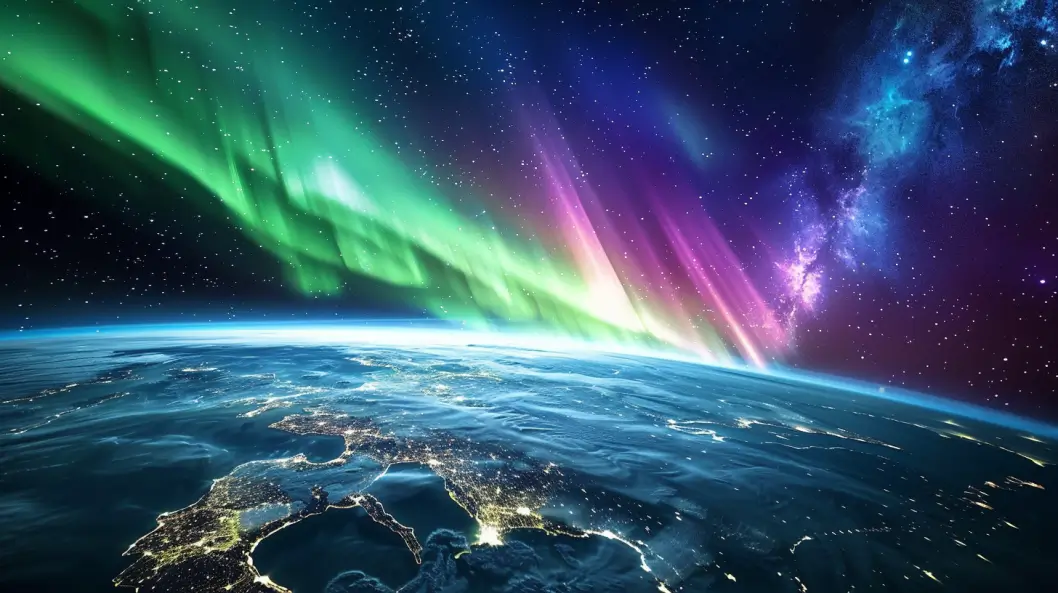
Magnetic storms can cause malfunctions in electronic devices such as computers, smartphones and other gadgets. This happens due to a change in electromagnetic fields affecting electronics.
Communication systems such as mobile communications and the Internet can also suffer from magnetic storms. This can lead to communication interruptions and signal loss.
How to protect equipment
Magnetic storms can have a significant effect on electronic devices, causing malfunctions or even damage to the equipment. Here are some simple tips to help protect your equipment from the effects of magnetic storms.
1. Use protective devices
- Voltage stabilizers: These devices help maintain a stable voltage level in the electrical network, protecting your equipment from sudden fluctuations.
- Surge protectors: They protect devices from short-term high-voltage pulses that can occur during magnetic storms.
- Uninterruptible Power Supplies (UPS): These devices not only provide surge protection but also provide backup power in the event of a power outage.
2. Turn off electronics during storms
During predicted magnetic storms, all unprotected electronic devices should be turned off and unplugged. This will reduce the risk of equipment damage due to electromagnetic influences.
3. Regularly check the condition of the equipment
Regular maintenance of your electronic devices will help you identify and fix potential problems before they cause serious damage. Here are some recommendations:
- Cleaning from dust: Dust can accumulate inside the devices, leading to overheating and reduced performance.
- Checking cables and connections: Damaged cables and unstable connections can cause devices to malfunction during magnetic storms.
- Software updates: Regularly updating operating systems and software will help ensure stable operation of devices and protection against new threats.
4. Keep backup copies of your data
Magnetic storms can cause data loss on computers and other electronic devices. Make regular backup copies of important files and store them on external media or in cloud services. This will help to avoid losing valuable information in case of equipment damage.
5. Use shielding materials
To protect particularly important equipment, you can use shielding materials that reduce the impact of electromagnetic fields. Special shielded cables, protective wraps for devices and other similar solutions will help reduce the risk of equipment damage.
6. Maintain the electrical network in good condition
Make sure that your electrical network meets all technical requirements and has no defects. Use quality outlets, extension cords, and other electrical items to minimize the risk of outages during magnetic storms.
7. Space weather monitoring
Use apps and websites to monitor space weather and receive alerts about approaching magnetic storms. This will allow you to take the necessary measures in time to protect your equipment.
Protecting your equipment from magnetic storms doesn’t take much effort, but following these simple tips will help keep your electronics in working order and avoid unexpected repair or replacement costs.
Applications for tracking magnetic storms 📲
Overview of popular applications
There are many applications that allow you to track magnetic storms. Some of the most popular include:
| The name of the application | Functionality | Rating | Platform |
| Space Weather Live | Forecasts and alerts | ⭐⭐⭐⭐⭐ | iOS, Android |
| NOAA Space Weather | Warning about magnetic storms | ⭐⭐⭐⭐ | iOS, Android |
| Aurora Alerts | Aurora tracking | ⭐⭐⭐⭐⭐ | iOS, Android |
Each of these applications has its advantages and disadvantages. They provide information about the current state of the magnetic field, future forecasts and alerts about approaching magnetic storms.
It is recommended to use multiple apps for a more accurate forecast and receive alerts about magnetic storms.
Systematic analysis of magnetic storms 🌐
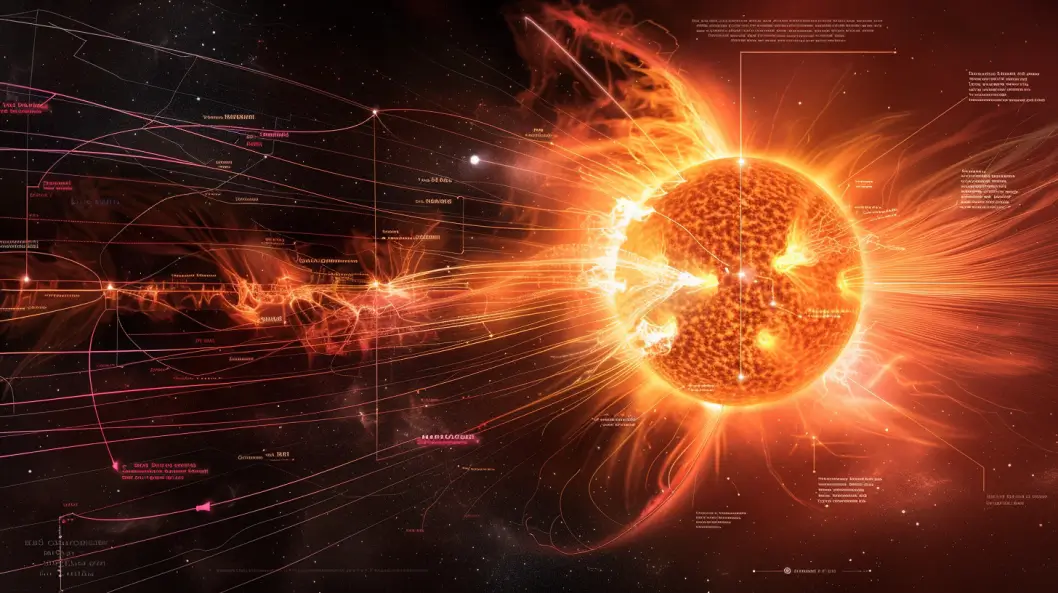
Magnetic storms are an important natural phenomenon that attracts the attention of scientists from all over the world. There are many world-renowned resources and international structures engaged in the systematic analysis and monitoring of magnetic storms.
Main international structures
- NASA (National Aeronautics and Space Administration, USA)
NASA monitors solar activity and magnetic storms using its spacecraft and satellites. NASA’s primary solar activity missions include:
- Solar Dynamics Observatory (SDO): studies the Sun and its influence on the Earth.
- Parker Solar Probe: explores the outer layers of the Sun’s atmosphere.
Additional Information: NASA Solar System Exploration
- ESA (European Space Agency)
ESA is also actively involved in the study of magnetic storms and their impact on Earth. They collaborate with other space agencies and use their missions to study solar activity, such as:
- SOHO (Solar and Heliospheric Observatory): a joint ESA-NASA mission studying the Sun.
- Cluster II: explores the Earth’s magnetosphere.
More information: ESA Space Weather Coordination Centre
- NOAA (National Oceanic and Atmospheric Administration, USA)
NOAA monitors and forecasts space weather, including magnetic storms. They publish data and forecasts to the public through their Space Weather Prediction Center (SWPC).
More information: NOAA Space Weather Prediction Center
- Heliospheric Observatory
This observatory is part of an international network that studies solar activity and magnetic storms. They use various instruments and satellites to monitor the Earth’s magnetosphere.
Useful resources and links
- Space Weather Live
This resource provides comprehensive information on current space weather, including data on magnetic storms, solar flares, and other phenomena. They also provide forecasts and alerts for users.
Link: Space Weather Live
- SolarHam
SolarHam is a website dedicated to space weather and solar activity. It provides up-to-date data, charts and forecasts about magnetic storms and other space phenomena.
Link: SolarHam
- METEONET Space Weather Center
This resource provides information on space weather and magnetic storms, including forecasts and analysis. They work with international organizations to ensure accurate data.
Link: METEONET Space Weather Center
Observation of magnetic storms

Observation of magnetic storms is carried out on different continents with the help of observatories and space vehicles. The main surveillance regions include:
- North America
- NOAA SWPC (USA): The Space Weather Center monitors and predicts magnetic storms.
- Observatory in Canada: Canadian observatories are also actively monitoring space weather.
- Europe
- THAT: The European Space Agency monitors with its missions and observatories.
- British Antarctic Service: They have observatories in the Antarctic that monitor magnetic storms.
- Asia
- Japan Aerospace Exploration Agency (JAXA): JAXA monitors space weather and magnetic storms using its satellites.
Magnetic storms are observed by scientists from all over the world. Using data from international organizations such as NASA, ESA, NOAA and others helps to understand and predict the impact of magnetic storms on Earth. Use the resources provided for up-to-date space weather information and alerts.
Magnetic storms: myths and reality 🌪️
Common myths about magnetic storms
There are many myths about magnetic storms that have no scientific basis. Example:
- Myth 1: Magnetic storms cause permanent illnesses.
- Myth 2: Magnetic storms can change human DNA.
- Myth 3: Magnetic storms always have a negative effect on health.
Scientific refutation of myths
Scientists refute these myths, emphasizing the temporary and minor impact of magnetic storms on human health. Research shows that most symptoms are short-lived and disappear after the storm is over.
Practical recommendations
To reduce the impact of magnetic storms, it is recommended:
- Lead a healthy lifestyle.
- Pay attention to your well-being.
- Use storm tracking apps.
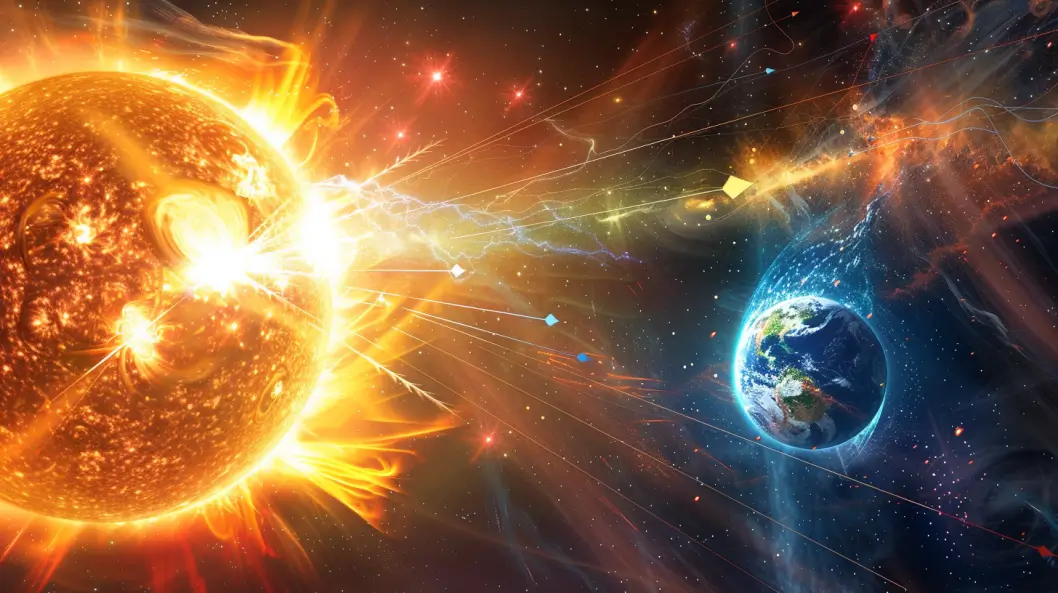
FAQ ❓
What are magnetic storms?
Magnetic storms are fluctuations in the Earth’s magnetic field caused by the influence of the solar wind.
How often do magnetic storms occur?
Magnetic storms can occur several times a year, depending on solar activity.
Can magnetic storms cause headaches?
Yes, some people can experience headaches during magnetic storms.
How to find out about the approach of a magnetic storm?
For this, you can use special applications that provide forecasts and notifications.
Do magnetic storms affect mental health?
Magnetic storms can cause temporary psychological symptoms such as irritability and anxiety.
What apps help track magnetic storms?
Apps like Space Weather Live and NOAA Space Weather provide alerts and forecasts for magnetic storms.
Magnetic storms are a natural phenomenon that can have various consequences for people and technology. It’s important to understand their impact and know how to protect yourself and your devices. Using magnetic storm tracking apps will help you be prepared for these phenomena and minimize their impact.
- Magnetic storms: the sun is testing the planet🌪️ - 13.06.2024
- Why You Should Drink Chicory: Benefits and Harms 🌿 - 09.06.2024
- Innovative Choice: Sproud Milk – Your Ideal Plant-Based Drink 🌱 - 03.06.2024
